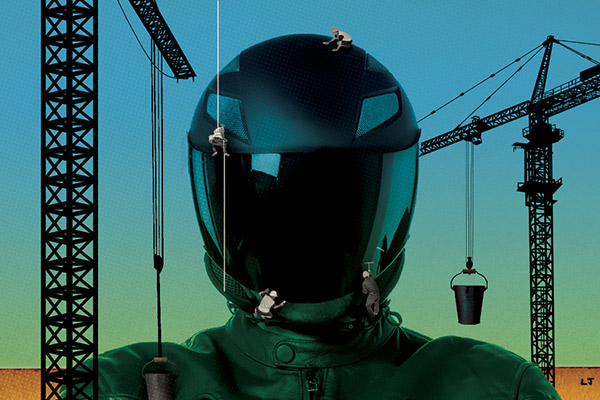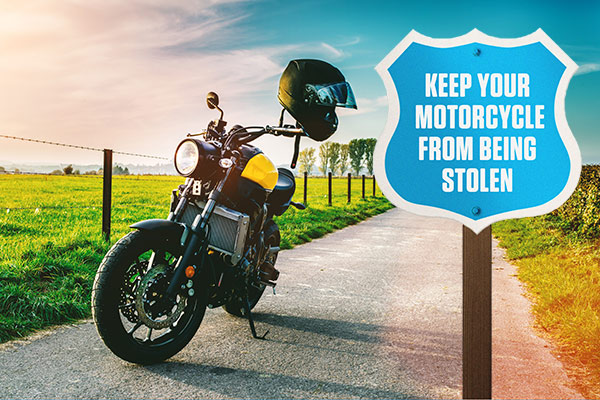Like a good pair of eyeglasses, a motorcycle helmet shield is essential for maximizing your vision on the road—and it’s a critical safety feature, too.
“The number one reason to have a shield on your helmet is for eye protection,” says Ty van Hooydonk, vice president of communications and rider coach with the Motorcycle Safety Foundation. “A shield is designed to protect you from rocks, stones and other things from the road that can damage your eyes. Sunglasses aren’t enough.”
It’s also important to have the right shield for the current road conditions, and to keep it clean, van Hooydonk says. Here’s what he recommends.
Own Different Tints
It can be good to have more than one shield for your helmet, because the light can change with weather conditions. When that happens, you can safely pull over and swap out your shield, which usually takes just minutes and doesn’t require tools. A darker gray tint may be best for riding through a sunny landscape, for example, whereas a lighter gray might work best while riding where sunlight can be patchy. Shields with a clear tint are good for rainy or overcast days. Tinted shields range in price from $40 to $100.
You can also find photochromatic shields, which darken as the light brightens (like sunglasses), meaning you may need just one. These are more expensive, though—usually around $200. More expensive still are LCD shields, which instantly change tint with a click. However, some of these may not go all the way to clear, so they’re only advisable for daytime rides—you’ll still need a clear shield if you’re out at night.
Shopping For Shields
The best option is to buy a shield made for your specific helmet from the helmet maker, so you know it’s going to fit right and be of high quality. Contact a helmet retailer, which will have replacement shields from the helmet makers, or order them online from a reputable dealer or directly from the manufacturer.
Clean It Often
Shields are made of a durable polycarbonate, but they need to be cleaned gently—and often. Every time you ride, you’ll most likely get bug splatters and road grime on your shield. It may be tempting to scrape off unwanted debris with your glove, but that can leave scratches. Fortunately, the best way to clean your shield is also the easiest. Wet a microfiber cloth with plain water and lay it on top of your shield for five minutes—the bugs and dirt should lift off on their own. Then gently wipe clean. For stubborn bits, add a mild soap to the water, such as one you’d use for your hands (not dish soap, though—that’s too harsh). Repeat after every ride. If you take care of your shield, it should last the lifetime of your helmet.
Tip: Stash two microfiber cloths with you on your ride. Keep a dry one in a plastic zip-top bag and a wet one in another. That way, you can wipe off the bugs as needed, before they have a chance to dry and harden.
Stay Fog-Free
Some shields have an anti-fog coating on the inside, while others come with thin inserts that keep the shield clear. Both require very gentle care: Use only a water-moistened microfiber cloth to wipe them down. You can find other anti-fog products, like sprays and wipes, as well as after-market plastic inserts that you attach yourself. All of these may assist in keeping your shield fog-free, but check the owner’s manual (or contact the manufacturer) before applying anything to your shield.
Tip: Despite your best efforts, the inside of your shield may fog up. When you’re stopped, like at a traffic light, crack the shield open a little from the bottom to let air circulate inside the shield, and breathe through your mouth—downward—to allow the shield to clear.
Where To Keep It
Store your helmet and shield in a cool, dry place—but not in the garage. Your helmet can absorb vapors and chemicals you may keep there, which aren’t good for the helmet and can reduce its life span. Storing it on your bike is also not ideal: It could easily fall off and get damaged; plus, vapors from the fuel-tank vent can get into the helmet and damage the materials. Instead, put your helmet and shield in a soft helmet bag and keep it indoors. That way, it’s out of extreme cold and heat, and in a safe place where it’s less likely to get banged around.
Looking for another smart way to help protect yourself and your ride? Check out motorcycle insurance from GEICO and see how much you could save. Get a fast, free quote now!
Read more: Motorcycle Gear To Help Increase Rider Safety
By Ellise Pierce









Wicked Stock says,
Thanks for Sharing useful insights.